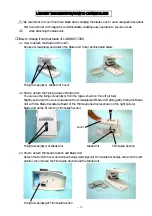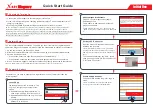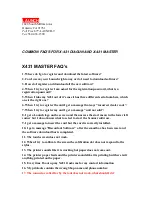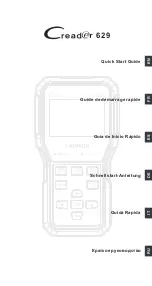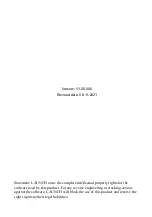
23906-000 en/2022-11
15 / 30
1
electronic GmbH & Co. KG • Heinrichstraße 3-4 • 12207 Berlin • Deutschland • info@bandelin.com
Notes - Temperature and heating
• Heated liquids intensify the ultrasound e
ff
ect. Experience has shown that the best
results are obtained with a bath temperature of 50 to 60 °C. With high temperatures,
the e
ff
ect of the ultrasound cavitation decreases; however
1
.
• In order to save time during use, the bath liquid may be preheated during degassing.
• Ultrasound energy warms up the sonication
fl
uid (even without additional heating).
- In the event of continuous operation and/or if the oscillating tank is covered,
the temperature of the liquid may increase more rapidly and even rise above
the maximum value of the thermostat (80°C). For this reason, check the
temperature when treating temperature-sensitive components.
- Non-aqueous
fl
uids can heat up many times faster than water. A possible
fl
ashpoint can be reached and/or exceeded after a very short sonication time.
In the case of high-boiling liquids (with and without a
fl
ashpoint), the bath
temperature can increase to >120 °C due to the energy input of the ultrasound.
This leads to irreparable damage to the ultrasonic bath.
• For an optimum bath temperature, adhere to the speci
fi
cations of the specimen
manufacturer!
• To protect the electronic components inside the ultrasonic bath, the ultrasound
output is reduced upon reaching a critical temperature in order to inhibit a further
increase in the interior temperature.
• The liquid in the oscillating tank must not exceed a maximum operating temperature
of 100 °C.
• Cover the ultrasonic bath when in continuous operation so that not too much bath
liquid evaporates.
• For safety reasons ultrasonic cleaning baths should be covered when not in
operation, to prevent operating and external personnel from inadvertently coming
into contact with the bath liquid and being injured by liquids that are still hot.
4.2
General use
Step 1 :
Fill the oscillating tank
The oscillating tank is
fi
lled with water and a suitable preparation to reduce the surface
tension, see chapter 7.3.
Fill 1/3 of the oscillating tank with water.
Add dosed agent to the oscillating tank.
Fill carefully up to the
fi
lling level mark, avoid the formation of foam as much as
possible.
1 MILLNER, R.: Wissenspeicher Ultraschalltechnik, Fachbuchverlag publishing house, Leipzig 1987


































